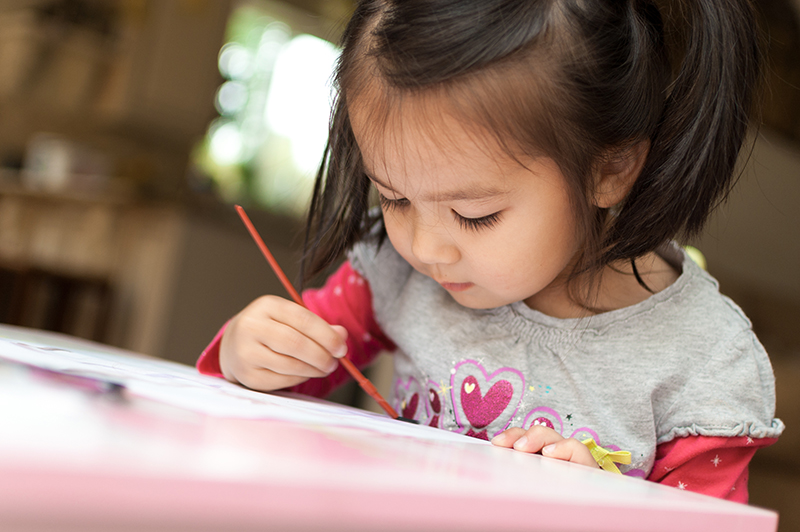
Children with autism spectrum disorder (ASD) develop differently from other children. They also have challenges in interacting and communicating with others. These challenges can affect their development and learning.
Autism spectrum disorder: how it affects development
Children with autism spectrum disorder (ASD) develop at a different rate and don’t necessarily develop skills in the same order as typically developing children.
For example, a child with ASD might start to use a few single words around 12 months of age. He might not have the explosion of language that other children have, perhaps learning only a couple of new words each month. It might take him until he’s three years old, or older, to start combining these words together into short phrases.
Another child with ASD might be able to label her own body parts but might not be able to label body parts in a picture. Or she might be able to identify colours but not be able to sort according to colour.
Autism spectrum disorder: how it affects attention and interaction
Children with ASD don’t tune into other people in the same way as typically developing babies and children.
For example, a child with ASD might not respond to his name, make eye contact, smile at caregivers, or wave goodbye without being told to. A child with ASD also might not use eye contact or pointing to get someone’s attention or communicate.
Using eye contact and gestures to share experiences with others is called joint attention (or shared attention).
Children need the skill of joint attention for developing communication and language skills. For example, if a dad is pointing to a picture of a dog, but the child is looking somewhere else, it will be more difficult for the child to learn the link between the picture of a dog and the word ’dog’.
Difficulty with joint attention can also make it hard for children with ASD to learn skills like taking turns, interpreting facial expressions or keeping to the topic of a conversation.
Attention is a skill that develops over time. Our article on learning to pay attention explains how you can use play to build this skill in your child with ASD.
Autism spectrum disorder: how it affects understanding
Children with ASD find it hard to see things from other people’s perspectives.
They might have trouble understanding that other people can have different desires and beliefs from them. They might also find it hard to understand and predict other people’s behaviour, and to understand how their behaviour affects others.
Seeing things from other people’s perspectives is an important social skill. Without it, children with ASD can find it hard to understand and get along with other people.
In everyday life, this can mean that children with ASD don’t understand why another person is upset.
Typically developing children develop these skills at around 3-5 years, but it can take much longer for children with ASD.
You can use strategies like role-play and video-modelling to help your child with ASD learn social skills.
Autism spectrum disorder: control and regulation
Children with ASD can struggle with focus, attention, transitions, organisation, memory, time management, emotional control and frustration. We use these high-level abilities to help us do lots of daily tasks, like working cooperatively with others and prioritising things we need to do.
Difficulties with these abilities can affect a child’s learning. For example, while solving a math problem, the child might know her facts well, but might not be able to come up with a solution. This is because she can’t organise her ideas or put all the information together to solve the problem.
Difficulties with high-level abilities can sometimes lead to challenging behaviour. Our article on managing challenging behaviour in children with ASD has ideas and information that can help.
Autism spectrum disorder: seeing the 'big picture'
Children with ASD have difficulty seeing the ‘big picture’. They can get lost in the details, rather than pulling together different sources of information and seeing the situation as a whole.
For example, when someone who can see the big picture looks at an endless expanse of trees, that person would see ‘the forest’. But someone who can’t see the big picture would see only lots of individual trees.
Difficulty in this area can affect a child’s learning and development – for example, after reading a story, the child might remember the small details but forget what the story means overall. A younger child might look at a picture book and focus on details in the background, rather than the characters and the storyline.
The ability to focus on detail can also be a strength. In our article on thinking and learning strengths, you can read more about how to spot strengths in your child’s thinking, and use these to promote your child’s development.
© raisingchildren.net.au, translated and adapted with permission